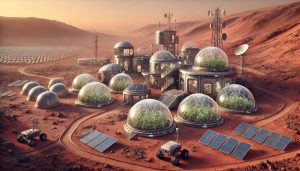Will we go to Mars?
Elon Musk and his company SpaceX have achieved some impressive rocket flight successes in recent months. In 2024, SpaceX conducted 90 missions, including Falcon 9 launches, many of which reuse the same components, significantly reducing the cost of space missions. One example is the Galileo L13 mission, in which the Falcon 9 carried satellites for Europe’s Galileo navigation system into orbit, and the rocket’s first stage successfully landed on a drone platform in the Atlantic Ocean.
In addition, SpaceX continues to test the Starship rocket, the most advanced and powerful launch system, which could be crucial for missions to Mars. In March 2024, the third Starship test flight took place, during which the rocket achieved new maximums, including atmospheric reentry and controlled landing. SpaceX plans more test launches of this system in the coming months, which could lead to even greater achievements in 2024.
Starship and Falcon 9 are key projects in the long-term space exploration plans, and SpaceX is constantly working on improving them.
What is the point of going to Mars if there is no Earth’s atmosphere or water there?
Expeditions to Mars, despite the fact that the planet does not have Earth’s atmosphere or liquid water, have several strategic, scientific and technological goals:
1. Scientific research and the search for life
Mars is one of the closest planets that could have had conditions favorable to life in the past. Although there is no liquid water on the surface today, there is evidence of rivers and lakes in the past. Searching for traces of past life or microorganisms can answer fundamental questions about life in the universe.
2. Colonization and survival of the species
One of the long-term goals promoted by Elon Musk and SpaceX is the colonization of Mars as a “plan B” for humanity. Earth may encounter threats in the future, such as climate change, nuclear conflicts or asteroid impacts, which may threaten life on our planet. Mars may become an alternative place to live in the event of a global catastrophe.
3. Development of technology
Mars is an excellent laboratory for developing modern space technologies. Expeditions to Mars require the development of new ways of surviving in difficult conditions, such as the production of oxygen, water and food in closed ecosystems. These technologies may have wide applications not only in space, but also on Earth, e.g. in regions with difficult environmental conditions.
4. Expanding knowledge about the Solar System
Mars is a key point in the study of the history of the Solar System. Discoveries related to the geology of Mars, its atmosphere and its moons can help to better understand the processes that shape planets. This knowledge can also help in future expeditions to other planets and moons.
5. Resources and the development of the space economy
Although Mars does not have liquid water, it does have water ice, which can be used to produce water, oxygen, and even rocket fuel. Exploring Mars could open the way to the exploitation of mineral resources on its surface, which could become part of a developing space economy.
6. Inspiration for humanity
Expeditions to Mars, like landing on the Moon, can inspire people around the world to cooperate, innovate, and develop new technologies. Such events have cultural and social significance, stimulating creativity and interest in science and technology for generations to come.
Despite the difficult conditions, Mars is seen as a step forward in space exploration and preparation for more advanced missions, such as expeditions beyond our Solar System.
Will it be possible for people to live on Mars without constant supplies from Earth?
Life for people on Mars without constant supplies from Earth may become possible, but it will require the development of advanced technologies and solutions allowing the colony to function autonomously. The main challenges of such an undertaking include producing oxygen, water, food, and energy on-site. Here are the key aspects that will determine whether life on Mars is possible without a constant supply:
1. Oxygen production:
Mars has a very thin atmosphere, consisting mainly of carbon dioxide (CO2). However, NASA has already tested a device called MOXIE (Mars Oxygen In-Situ Resource Utilization Experiment) during the Perseverance mission. MOXIE can convert carbon dioxide into oxygen, which is the first step toward producing oxygen for a colony.
2. Water from ice:
Although Mars has no liquid water on the surface, there are large deposits of water ice beneath the surface. Exploitation of this resource could provide the necessary drinking water, for plant cultivation and for the production of oxygen and hydrogen (e.g. as fuel) by electrolysis.
3. Food cultivation:
Long-term life on Mars would require the ability to grow plants in Martian conditions, which is a major challenge due to the lack of an Earth-like atmosphere and soil. However, experiments on Earth have shown that the Martian regolith (soil) could potentially be used as a growing medium if conditions were suitably enriched and controlled. Crops in closed ecosystems with a controlled atmosphere would be essential.
4. Energy:
Mars receives significantly less sunlight than Earth, making solar energy production less efficient. Possible solutions include energy storage (e.g. using batteries) and the development of alternative sources, such as nuclear reactors, which could provide energy for Martian colonies over longer periods of time.
5. Radiation insulation:
The lack of a suitable atmosphere and magnetosphere on Mars means that the planet’s surface is exposed to strong cosmic radiation. To protect the colonists, shielding would be needed, such as regolith structures that would provide radiation protection, or living in underground bases.
6. Closed Ecosystem Technology:
A key element would be the creation of closed, self-sufficient systems that would recycle resources such as water, air, and nutrients. Such systems would be essential to minimize dependence on supplies from Earth.
Summary:
While life on Mars without a constant supply from Earth is theoretically possible, it requires advanced technologies that are still in development. Many of these technologies, such as on-site oxygen production, water ice mining, and plant breeding, would need to be perfected before they could become a reality. However, with time and technology, it is possible to create self-sufficient Mars colonies.



Comments
Will we go to Mars? — No Comments